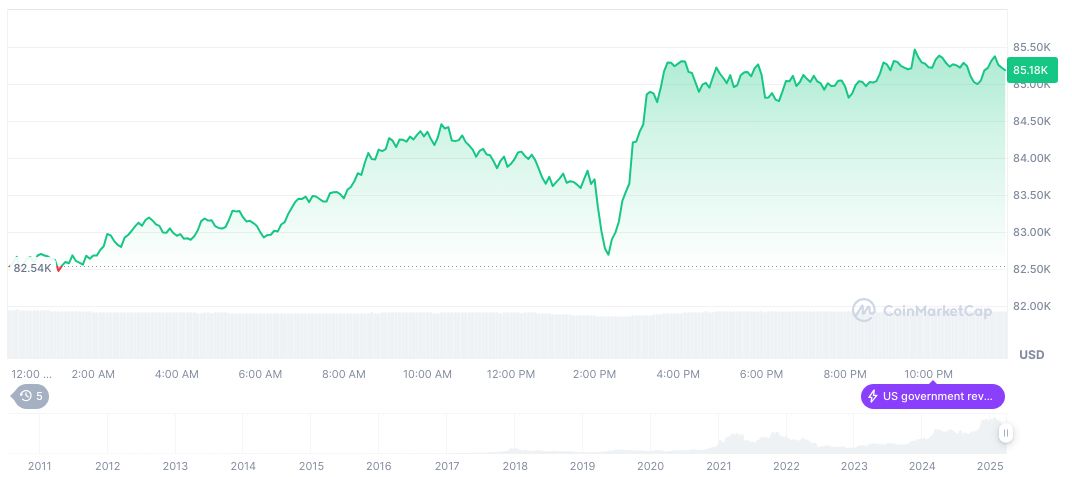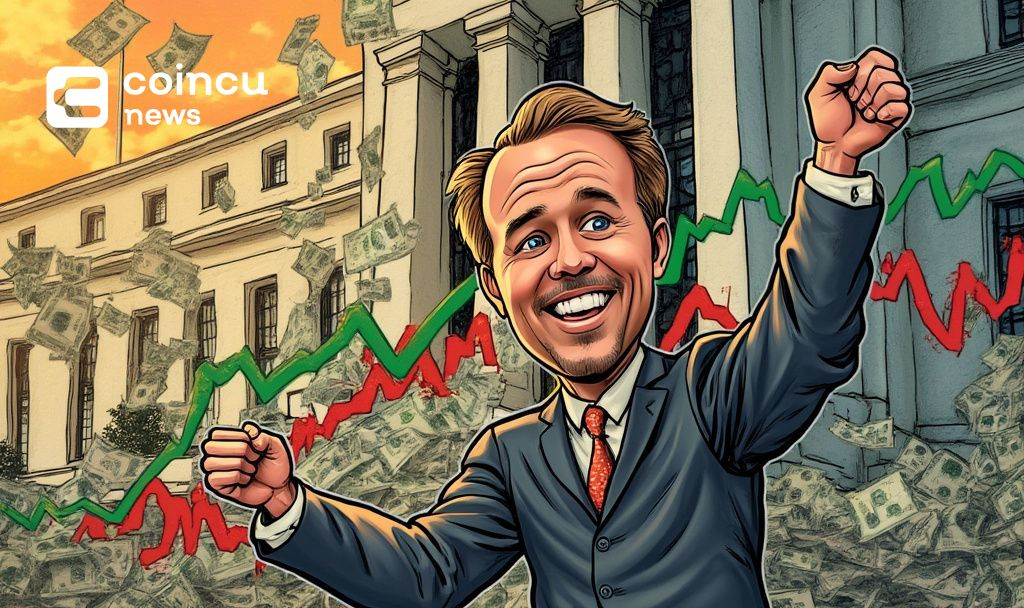 CaryptosHeadlines Media Has Launched Its Native Token CHT.
Airdrop Is Live For Everyone, Claim Instant 5000 CHT Tokens Worth Of $50 USDT.
Join the Airdrop at the official website,
CryptosHeadlinesToken.com
CaryptosHeadlines Media Has Launched Its Native Token CHT.
Airdrop Is Live For Everyone, Claim Instant 5000 CHT Tokens Worth Of $50 USDT.
Join the Airdrop at the official website,
CryptosHeadlinesToken.com
- BitMEX’s Arthur Hayes anticipates Federal Reserve’s return to QE; positive for Bitcoin.
- Fiscal dominance may force the Fed into QE.
- Bitcoin benefits from increased dollar liquidity as a hedge.
BitMEX co-founder Arthur Hayes, in a satirical article, foretells the Federal Reserve’s likely return to quantitative easing.
This shift is projected to fortify Bitcoin’s position due to increased liquidity and fiscal pressures.
Impact of QE on Bitcoin and U.S. Fiscal Policy
Arthur Hayes’ novel-like article underscores Federal Reserve Chairman Jerome Powell’s “forced compliance” due to fiscal dominance. Hayes emphasizes a probable return to quantitative easing (QE) to manage the U.S. fiscal deficit, casting a positive outlook for Bitcoin’s growth.
The anticipated monetary policy shift entails a renewal of QE to lower fiscal pressure. This renewal could prove beneficial for digital assets, notably Bitcoin, due to its recognized role as “digital gold” and hedge against inflation and currency depreciation.
“Fiscal dominance means the Federal Reserve will abandon its independence, prioritizing ensuring that the government can finance itself at affordable interest rates, which will inevitably lead to persistently high inflation. Bitcoin, as a digital gold, stands to benefit immensely from this new round of capital release.” — Arthur Hayes, Former CEO, BitMEX
Bitcoin’s Rising Role Amid Potential Federal Reserve Actions
Did you know? Instances of QE after past financial downturns saw Bitcoin prices appreciate, reinforcing its “digital gold” reputation.
As of April 2, 2025, Bitcoin (BTC) is trading at $84,249.03 with a market cap of $1.67 trillion, according to CoinMarketCap. Bitcoin dominates 61.82% of the market, despite a 17.77% decrease over the last 60 days, reflecting recent volatility.


Coincu analysts anticipate that potential QE could reshape crypto financing landscapes by reenacting liquidity surges seen post-2008. Bitcoin’s unique properties may draw heightened attention as investors seek secure alternatives amid prolonged inflationary pressures.












